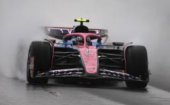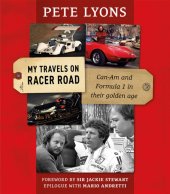ISSUE #34
COVER STORY
Ferrari 333 SP
A Ferrari prototype for customers – Development and technology of the 333 SP
Piero Ferrari – Carrying on a great name
A winning start in America – 1994–1997
Success in Europe – 1998–2003
All wins of the Ferrari 333 SP
Interview with Luca Pignacca and Dialma Zinelli from Dallara
A Ferrari prototype for the customers
The development and technology of the 333 SP
After the demise of Group C and the IMSA GTP prototypes, hard times lay ahead for sports car racing. Interest increasingly shifted to GT cars, and the future of sports prototypes seemed uncertain. That’s when Giampiero Moretti, an entrepreneur from Milan, approached Piero Ferrari with the idea of developing a modern Ferrari prototype to be used by customers – a project which was to make a major contribution to the survival of this motorsport category, especially in the USA
Sports cars and prototypes were always a priority for Enzo Ferrari, but at some point the Commendatore had to accept the fact that he had to concentrate his racing activities in order to be successful. When the 1973 Formula 1 season turned out to be a disaster for Ferrari, the die was cast. The Italian manufacturer pulled out of the World Sportscar Championship and focussed its efforts, to great success, on Formula 1.
It marked a change of plans for Enzo Ferrari, who as late as the 1960s had wanted a presence on all fronts of international motorsport – Formula 1, Formula 2, sports prototypes, GTs, the European Hillclimb Championship, Can-Am and even Indianapolis. But over time, even with the support of the Fiat Group, the finances just weren’t there for such an ambitious array of programmes. Ferrari engines continued to be used in Lancia’s Group C prototypes, but not with much success…
More in the current issue!
by Thomas Nehlert
Photographs: Norbert Singer, Dallara, McKlein
A winning start in America
1994–1997
Considering the short development phase and the limited budget, the Ferrari 333 SP enjoyed a solid racing debut. The car was quick out the gate and, in the opinion of the drivers, pleasant to drive. It soon became a favourite on the North American sports car scene.
The 333 SP had been developed in just nine months. The first tests took place at the beginning of 1994 with Mauro Baldi, Dario Benuzzi and Nicola Larini at the wheel. The car made a good impression from the start. The only weakness was the brakes, but that was quickly rectified. But one car, chassis number F130 E 001, was completely destroyed during testing. For the full chassis designation, Ferrari had cleverly used the same system as with the F50 (initially Ferrari 130). The E stood for ‘Evolution’. The destroyed car was quickly rebuilt on a new chassis.
Despite the promising tests, Maranello didn’t want to risk debuting the 333 SP at the gruelling endurance classics in the US, the 24 Hours of Daytona and the 12 Hours of Sebring. Instead, Ferrari opted to have the car on static display at these events to further stoke interest…
by Thomas Nehlert
Photographs: John Brooks, Motorsportimages, Michael Keyser, Ib Trebbien
‘We were part of a family’
Racing for Brun
When he was just three years old, Thierry Boutsen already knew he wanted to become a racing driver – and he later turned his boyhood dream into reality, competing in 163 Formula 1 grands prix between 1983 and 1993. The quiet, reserved Belgian might not have been as flashy or spectacular to watch as some of his colleagues, but he was precise and error-free and, thanks to his engineering studies, knew how to develop a car. Boutsen established a reputation as a reliable points-scorer and, at the peak of his F1 career in 1989 and 1990, won three races with Williams-Renault. He enjoyed success in touring and sports cars as well, including two second places at Le Mans and a win at Daytona. Today, the former racer lives in Monaco, where he runs his business Boutsen Group – and writes exclusively as a columnist for AUTOMOBILSPORT about his motorsport career and the people he met along the way.
1985 was a year of surprises for me, as you will recall from my first column in Issue #32 where I recounted how I won the Daytona 24 Hours that year. That story, however, didn’t end with the podium ceremony – there was another chapter yet to come. After the race, I met Walter Brun and his squad at the airport. He came over to congratulate me. ‘Congratulations on the win,’ he said and went straight on to ask, ‘would you like to drive for my team in Europe?’
I said yes right away, and I must say, it was one of the best decisions of my life. Not just because of the racing, but also and mainly because of the human side of the team. Brun was a very small outfit, extremely motivated, run by a man who enjoyed every minute of what he was doing and transmitted this joy to every member of the team including the drivers. We were part of a family, and we never talked about business, only about friendship and sport. The feeling of togetherness was amazing. I never experienced anything like it in another team before or after…
by Thierry Boutsen
Photographs: Ib Trebbien, Brun
‘You have to live in the present’
The story of an extraordinary book project
Walter Brun celebrated his 80th birthday on 20 October. The self-made man from Entlebuch in Switzerland can look back on an eventful life like hardly anyone else. Three weeks before his birthday, we presented our book Brun Motorsport 1966–2009. A project nearly as crazy, in a positive sense, as the protagonist himself.
The summer of 2016. In our editorial office, we’re putting together the framework for AUTOMOBILSPORT Issue #10. Karl Ludvigsen contributes the cover story on the legendary Ferrari mid-engine sports cars of the 1960s. Our columnist Eckhard Schimpf writes a very personal article about an old companion and fellow Jägermeister man: Walter Brun. While searching for pictures, I come across Sacha Brun on Facebook. He is one of Walter Brun’s sons and has obviously inherited the racing bug from his dad. I write to him to ask if he has any rare photos from tests, private albums or the like. Sacha Brun still laughs today when he recalls that the scan quality wasn’t good enough for me and he sent the collected prints to the editorial office. ‘After that, the first thing I did was buy a new, better scanner,’ he smiles looking back.
Getting the ball rolling
Four years later, in the summer of 2020, Sacha Brun approached me again and told me that the first book he had published on Brun Motorsport had not been available for a long time. Horrendous sums were being paid on the second-hand market, so he wanted to publish a new book. In 2020 he asked if we could do it together, and we came up with a concept for a book of no more than 400 pages, a high-quality illustrated volume with the best photos from four decades of Brun Motorsport. And then the Brun genes came into play again. ‘I want to show every race Brun Motorsport ever did in Group C,’ said Brun junior. ‘There has to be one photo of every livery, every car.’ And he didn’t let up, writing to photographers all over the world and compiling reams of pictures. Today, Sacha Brun has the most extensive private collection you could imagine of his father’s and Team Brun’s races. And the best photos from that collection ended up in our book…
by Robert Weber
Photographs: Archive Alwin Springer, Archive Brun, Daniel Reinhard
Tiny powerhouse at the 'Ring
Fiat Abarth 1000 TCR (Chassis 210 1762)
The Nürburgring is well known for hosting races for grand prix cars, sports cars and big touring cars. A number of entries from those categories took part in the fourth Nürburgring Classic in late May. From DTM cars to Can-Am cars to Group C prototypes to 1990s Formula 1 cars, spectators were treated to a variety of hardware.
But it wasn’t all about big cars at the ’Ring. Seven- ty-seven cars took part in the ‘Kampf der Zwerge’ (‘Battle of the Dwarfs’) competition for under-1,300 cc touring cars from the 1960s and 1970s. These cars have put on spectacular racing at the ’Ring in the past, whether it be as part of the European Touring Car Championship, the six-hour races or on the support card for the Formula 1 Grand Prix. The series, founded in 1992, features numerous entries from Fiat and Abarth, NSU and Autobianchi, a variety of Mini Coopers, and rarer cars from Alpine, Simca and Lada.
Swiss speedster
Among the 77 cars on the grid was Leo Kröner’s Fiat Abarth 1000 TCR, chassis number 210 1762. Before joining the Kampf der Zwerge series, the car had only raced at the Nürburgring once. That was because it was mostly used in Switzerland.
The car was built in 1970 by the Abarth company in Turin. The ‘naked’ bodyshell, i. e. the basis of the Abarth TCR, was obtained directly from Fiat. After completion, the car was delivered and imported into Switzerland on 1 April 1971. At the end of 1973, it was raced in the Swiss championship by a young Walter Baltisser. The championship consisted of hillclimbs, slaloms and circuit races (in surrounding countries). Baltisser competed in the under-1,000 cc special touring car class and enjoyed success immediately. At the end of the season, he was third in the Groups 2 and 4 class behind Harry Blumer (Porsche) and Ruedi Blumer (Ford Escort). In 1975 Baltisser switched to sports cars, and he became Swiss champion in 1977. At the time, Swiss magazine Powerslide reported that Baltisser had ‘risen to prominence this year mainly due to his exploits with the Abarth’…
by Jacob Queißner
Photographs: Collection Leo Kröner, Christel and Rudy Dombree
- Jochen Neerpasch about the promotion of young talent
- Uwe Mahla about the Deutsche Rennsport-Meisterschaft
- Eckhard Schimpf on Gerhard Berger
- Etienne Bourguignon about the 31st Gran Premio d'Italia 1960
- Kerry Morse and Greg Brown about Alwin Springer
- Robert Weber about the Zandvoort Historic Grand Prix 2022
- Back on Track Fiat Abarth 1000 TCR (Chassis 210 1762)
- and many more!
This product was added to our catalog on Friday 18 November, 2022.




